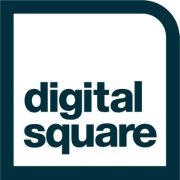OpenMRS
OpenMRS
OpenMRS is a scalable, modular, interoperable, open source electronic medical records platform (EMR), designed for use with other health information systems and in resource-constrained settings. Since OpenMRS launch in 2007, more than 6,700 healthcare clinics in over 35 countries are using OpenMRS to provide improved healthcare to 15.8 million patients. OpenMRS provides health care workers with easier and greater access to data from longitudinal patient records that can inform patient care. Increasingly, data from OpenMRS is also used by digital health leaders to inform the public health decisions needed to achieve the UN Sustainable Development Goals, measure progress towards UNAIDS 95-95-95 targets for HIV epidemic control, respond to outbreaks such as Ebola and COVID-19, and achieve universal health coverage.
As a result of better healthcare information technology, countries where OpenMRS is predominantly used have seen a reduction in AIDS infection rates as well as deaths of both AIDS and malaria. Countries such as Kenya, Nigeria, Mozambique, Haiti, Rwanda, and Uganda have widely adopted OpenMRS as their premier EMR platform or have declared it to be their official EMR.
Approach
OpenMRS, as an open-source project, provides a unique solution which puts local providers and patients at the center of their health information ecosystem. It allows for low-resource settings, in particular, to benefit from the contributions of others while being able to customize their own technologies. This is a foundational transformation that allows for local innovation and the development of new solutions to difficult health-related problems. When OpenMRS implementers customize the OpenMRS platform and reference application in response to local user needs and country context, the resulting OpenMRS implementation becomes an essential point-of-service system in a country's health information exchange architecture. The OpenMRS community accompanies this work with a model that supports community development, capacity building and local ownership.
OpenMRS products aim to ensure that patients get the right, timely, and appropriate care; that healthcare workers have timely, accurate, and complete information; and that organizations can access the data they need to improve the efficiency and quality of care delivery. OpenMRS implementing organizations extend OpenMRS products to create localized EMR systems that support a variety of care programs, including HIV, TB, non-communicable diseases (NCDs), maternal and child health (MCH), COVID-19, and oncology.
An OpenMRS EMR system is built using the three OpenMRS building blocks: the core platform, concept dictionary, and foundational, ready-to-use modules (OpenMRS Add Ons and/or OpenMRS 3 Apps), offering users the following, broad features and functionality:
- Retrospective data entry or point-of-care
- Registration and appointment management
- Clinic dashboards, queues, and patient lists
- Patient chart and in-chart dashboards
- Labs orders and results
- Medications and pharmacy
- Dashboards and reporting
- Concept dictionary management
- Standards-based data exchange with other health information systems at a health facility and with a national health information exchange architecture (laboratory, client registry, shared health records)
- System administration
- Implementation tooling (forms, configuration, maintenance, etc.)
Implementations
In 2005, OpenMRS was initially implemented at a few facilities in Kenya, Rwanda, and South Africa with a specific focus on supporting HIV care and treatment. Since then, adoption of OpenMRS products has spread to at least 6,745 health facilities in 35+ countries. Health care workers at these facilities use OpenMRS to provide care for more than 15.8 million patients enrolled in a wide variety of programs, now including HIV, TB, Maternal and Child Health, Non-Communicable Diseases (NCDs), and most recently, COVID-19.
The primary OpenMRS users are the health care providers who care for patients at health care facilities in low and middle income countries. The doctors and nurses who use OpenMRS strive to deliver quality health care to patients in the shortest period of time. They seek to make the best decisions about patient care based on the information captured in the system from the moment a patient arrives at their facility to the end, when a patient leaves the facility. They look to OpenMRS to be fast and easy to navigate, to look up a complete patient record quickly, and capture patient data accurately.
Resources
- Website: https://openmrs.org/product/
- Source Code: https://github.com/openmrs
- https://www.unaids.org/en/resources/documents/2016/prevention-gap;
- https://www.unaids.org/en/resources/fact-sheet;
- https://www.sciencedirect.com/science/article/pii/S1386505621000319
- Articles:
- OpenMRS as a Global Good: 15 years of impact
- User Perceptions and Use of an Enhanced EHR in Rwanda with and without Clinical Alerts: Cross-sectional Survey
- Information Systems for Patient Follow-Up and Chronic Management of HIV and Tuberculosis: A Life-Saving Technology in Resource-Poor Areas
- OpenMRS, A Global Medical Records System Collaborative: Factors Influencing Successful Implementation
- Open-Source Electronic Health Record Systems for Low-Resource Settings: Systematic Review
- Annual Report
